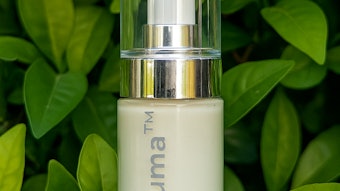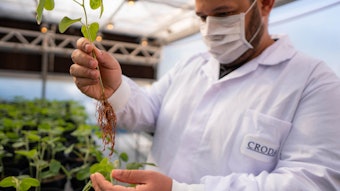“For time and the world do not stand still. Change is the law of life. And those who look only to the past or the present are certain to miss the future.”
—John F. Kennedy
This entry marks the 15th anniversary of the Chemical Reaction column. The world was remarkably different in August 1998. Google was incorporated on September 4, 1998, and its beta version was already beginning to supplant early search engines. Facebook was launched in February 2004, and the first iPhone became available in June 2007. The revolutionary changes in communication were not created by our industry, but, the bottom line is, they have transformed it more than any new raw material or formulation ever will.
So what hasn’t changed? We are still waiting for the Final Sunscreen Monograph. So much material was released by FDA in 2011 that it looked enough like a monograph to fool even the industry press, but while we have indeed had updates on testing and labeling, it isn’t really a monograph. The biggest substantive change is the need to address UVA to create broad spectrum protection. For consumers, in this regard, the biggest change from 1998 to now is that SPF has moved off the beach and into almost every skin product form, contributing to the double letter phenomenon.
On another front, we have wanted to be “green” for 20 years, but we still can’t agree on a definition of “green,” natural” or “sustainable.” The January 1999 issue of Global Cosmetic Industry had a feature article titled “You Call That Natural?!”. Well, here we are in 2013, and we still struggle with what natural is—or is not. Two decades of confusion and creative marketing have diluted the concepts to the point where they are just part of the background noise. Companies unwilling to pay for certification, or who consider the standard certification processes lacking, simply create their own standards. The stock procedure is to put “green” somewhere on the label, prominently display a picture of a leaf, and consumers instinctively feel that, in some way, it’s better for themselves and the Earth.
Another issue that was around in 1998 and is still with us is the resistance toward transparency in fragrance,1 which leaves a festering distrust on the part of some NGOs and consumer groups. There is probably a weakening of opposition in the industry to ingredient disclosure, but it is unclear if or when this issue will be resolved. The basic points for not revealing ingredients and their counterarguments:
- There are too many ingredients to fit on a label. Simple solution—post online.
- We need to protect intellectual property. Companies duplicate each other’s fragrances all the time; there are no real secrets.
It would be wise to accept transparency and take the biggest complaint away from the critics.
Where the Growth Remains
The biggest growth area in the industry remains skin care, led by cosmeceuticals—though the term still has no legal meaning. And it’s worth noting that the more a product really works and claims as much, the more it invites a warning letter from the FDA [see “Marketing and Regulations: Friends or Foes? Or Both?” for more on this topic]. Cutting-edge beauty companies are now working with genetics, the epigenome, DNA repair and anything that can turn the clock back on aging skin. But do we really want a cosmetic company, no matter how technically sophisticated, to play with DNA? Maybe a researcher from Johns Hopkins would be a better choice for such endeavors.
In any event, we now seem to have put cosmeceuticals on the back burner as all attention is on the double letter products: BB, CC, DD. One must be an initiate to even know what the letters mean, and of course more double letters are sure to come. Popular for years in Asia, multifunctional products have taken Western markets by storm lately. BB cream stands for blemish balm, blemish base or beauty balm. CC stands for color control or color correcting. DD cream has been defined as “dynamic do all” (what happened to the A?). If one Googles EE cream, one finds a breed of dachshund, which may create some confusion during casual Web searches for skin care.
Where’s This All Lead?
So where will the future lead us? Information and communication are the keys for both the industry’s relationship to consumers and for more effective product development.
In terms of consumers access to information, we find a double-edged sword. On the plus side it allows a flow of promotional material and allows user interaction and feedback. On the down side, it provides an unfiltered forum for critics of the industry who often cite bad science or no science at all in their pronouncements. There is a small but vocal group that firmly believes that cosmetics are delivery systems for endocrine disruptors and carcinogens. It has always been a challenge for cold rational science to prevail over hot, raw, uninformed emotions. The industry must learn ways to speak reason to consumers in a compelling fashion.
Then there is the future of smarter formulation. In 1949, all cosmetic formulators had was trial and error and a new concept from Bill Griffin that provided a method to streamline the selection ingredients. In recent times, Joe Lin* has promoted low energy emulsification, and Bob Lochhead* has shown the value of high throughput analysis. Johann Wiechers* shined rational light on the delivery of actives.
Now a brilliant outsider is giving us another way to move our industry forward as a science. Steven Abbott* was the programmer for Hanson Solubility Parameters in Practice (HSPiP)2 and Formulating for Efficacy (FFE),3 and he has moved away from conventional computing and into app development—something he does for the intellectual challenge, making them freely available on his website.4
Print has its limitations for certain content—notably when it’s time sensitive content, such as regulatory news. For formulating and product development content, apps and e-tools make it possible to have better technical books in regard to supporting equations and ability to interact with dynamic Web content. Apps greatly enhance the potential to drive life to formulas and graphs; they are mobile and interactive.
Take a real-world product development example addressed by a TEA-Stearate app. The most common anionic emulsion is created by a reaction of triethanolamine and stearic acid. Common commercial stearic acid is 50% palmitic acid and only 45% stearic acid, plus some minor components, so one really needs the acid value of the exact material being used. Then complete neutralization creates soap with very high pH, so more acid is added to bring the pH down. There are, of course, formulas for this. But put this in an app, tell it the percent of emulsifier in the formula, slide a scale to the desired pH and, voilà, there is your optimized ratio of ingredients.
In short, the future will be in your pocket—even more so than it is now. Resources will become steadily more digital and Web based—and valuable to the industry—as more useful material is made searchable and interactive. This new flow of information will be the most revolutionary change to how we do science since the Cosmetic Ingredient Dictionary was first published and desktop computing arrived, and should give everyone the tools to do better, smarter product development.
References
- S Herman, INCI Name: Fragrance, GCI. Nov 2011
- www.hansen-solubility.com
- www.jwsolutionssoftware.com
- www.stevenabbott.co.uk/AbbottApps
(All sites accessed May 31, 2013)
Steve Herman is president of Diffusion LLC, a consulting company specializing in regulatory issues, intellectual property, and technology development and transfer. He is a principal in PJS Partners, offering formulation, marketing and technology solutions for the personal care and fragrance industry. He is the New York Society of Cosmetic Chemists' 2013 chapter chairman and an adjunct professor in the Fairleigh Dickinson University Masters in Cosmetic Science program. He is also a Fellow in the Society of Cosmetic Chemists.










